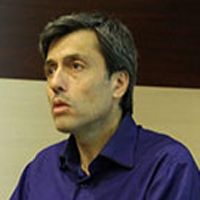The Effect of High Intensity Interval Exercise with Blood Flow Restriction on Anti-Oxidation Enzymes and Cellular Damage Factors in Recovery Time Courses among Inactive Females
Author(s):
Article Type:
Research/Original Article (دارای رتبه معتبر)
Abstract:
The purpose of this study was to determine the effect of a session of High intensity interval exercise with blood flow restriction on anti-oxidation system and the cellular damage indicators at recovery time courses among inactive females. for this purpose ,14 inactive female students of kharazmi university with (average height 161.21±6.69 cm, Weight 58.92±6.81 kg, age 25.75±1.86 years, body mass index (BMI) 22.48±2.53 kg per m2 and Vo2max 39.87±4.87ml/kg/min) participated in this study voluntarily. The participants were divided into two groups: with blood flow restriction (7 persons) and without the blood flow restriction (7 persons) participants after completing the conset, and questionnaires about lifestyle and daily physical activities took part in the test. Before, Immediately, after 3 hours and 48 hours ofter testing blood samples were taken from the participants to specify the amount of anti-oxidant enzyme and cellular damage indicators using the ELISA laboratory method. Kolmogorow-Smirnow test was used to evaluate how data distribution is normal, ofter that ANOVA test with two-way repeated measurements and inter group factor was used at significance level of (P
Language:
Persian
Published:
Sport Physiology, Volume:10 Issue: 37, 2018
Page:
49
https://magiran.com/p1860740
مقالات دیگری از این نویسنده (گان)
-
Comparison of metabolic profiles of elite male karate athletes with different physical fitness levels during different phases of simulated competitions
Masoud Rahnama, Hamid Mohebi *,
Metabolism and Exercise a biannual Jounal, -
The response of corticospinal excitability to different intensities of postactivation potentiation in young trained subjects
Hassan Kosari *, Pezhman Motamedi, , Shahriar Gharibzade, Shapour Jaberzadeh
Journal of practical studies of Biosciences in Sport,



